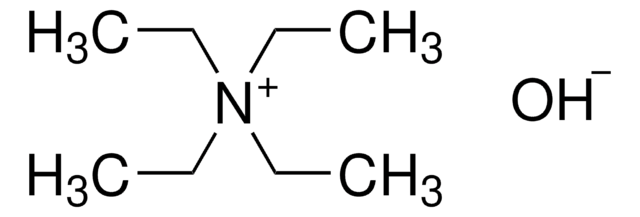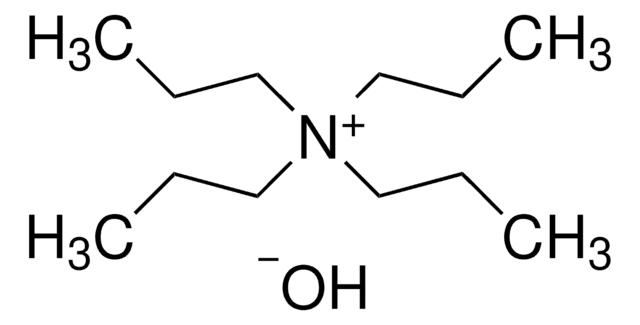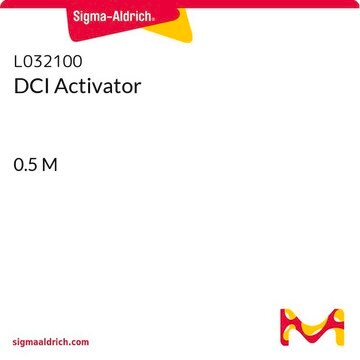86631
Hydroxyde de tétraéthylammonium solution
~25% in methanol (~1.5 M)
Synonyme(s) :
Hydroxyde de TEA
About This Item
Produits recommandés
Forme
liquid
Niveau de qualité
Concentration
~25% in methanol (~1.5 M)
Traces d'anions
sulfate (SO42-): ≤1000 mg/kg
Chaîne SMILES
[OH-].CC[N+](CC)(CC)CC
InChI
1S/C8H20N.H2O/c1-5-9(6-2,7-3)8-4;/h5-8H2,1-4H3;1H2/q+1;/p-1
Clé InChI
LRGJRHZIDJQFCL-UHFFFAOYSA-M
Vous recherchez des produits similaires ? Visite Guide de comparaison des produits
Description générale
Application
Mention d'avertissement
Danger
Mentions de danger
Classification des risques
Acute Tox. 3 Dermal - Acute Tox. 3 Inhalation - Acute Tox. 3 Oral - Eye Dam. 1 - Flam. Liq. 2 - Skin Corr. 1B - STOT SE 1
Organes cibles
Eyes,Central nervous system
Code de la classe de stockage
3 - Flammable liquids
Classe de danger pour l'eau (WGK)
WGK 3
Point d'éclair (°F)
49.5 °F
Point d'éclair (°C)
9.7 °C
Équipement de protection individuelle
Faceshields, Gloves, Goggles, type ABEK (EN14387) respirator filter
Faites votre choix parmi les versions les plus récentes :
Déjà en possession de ce produit ?
Retrouvez la documentation relative aux produits que vous avez récemment achetés dans la Bibliothèque de documents.
Les clients ont également consulté
Notre équipe de scientifiques dispose d'une expérience dans tous les secteurs de la recherche, notamment en sciences de la vie, science des matériaux, synthèse chimique, chromatographie, analyse et dans de nombreux autres domaines..
Contacter notre Service technique










